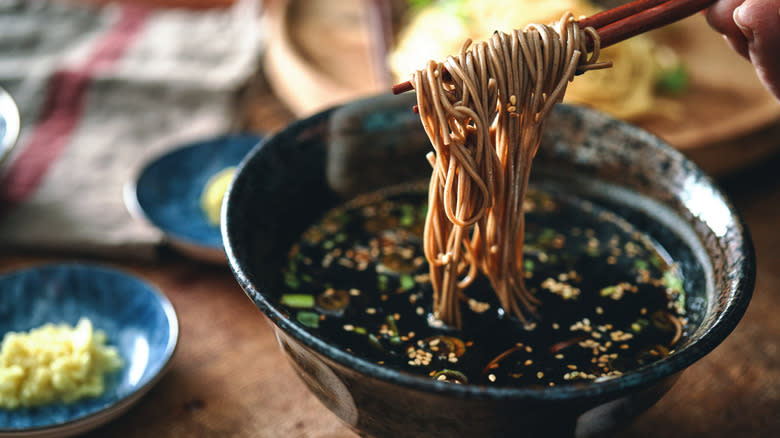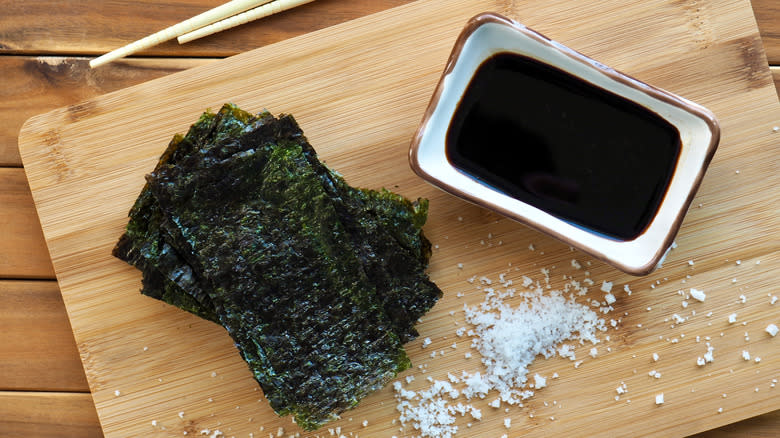Not Seasoning Your Soy Sauce Is A Total Waste Of Delicious Opportunity

Did you know you should be seasoning your soy sauce? Typically, we think of the sauce as a flavor-boosting condiment in itself, so it may have never occurred to you to add seasonings to it. But if you're using soy sauce on its own (in other words, not stirring it into a recipe), that's all the more reason to spruce or spice it up. Soy sauce is a fermented product with a palpable depth of flavor; it leans on the salty side (just one tablespoon has 902 mg of sodium), but that doesn't have to be its only dimension.
This condiment is delicious as it comes, but that's no reason to pass over the opportunity to push it in new directions — balancing its salty taste with something else. Depending on what flavor you're going for, you can add sweetness, spice, and umami flavors, along with a heavenly aroma, using garlic, shallots, and green onions. Seasoned soy sauce is delicious when drizzled over fish, scallops, noodles, eggs, wontons, dumplings, tofu, soup, and fried rice -- and, of course, it makes a tasty dipping sauce for sushi or sashimi.
Read more: 14 Additions To Boost The Flavor Of Store-Bought Ketchup
The Basics Of Seasoned Soy Sauce

If you want to make seasoned soy sauce, there are a couple of ways to do it. A Cantonese-style version of the condiment, which is primarily used for seafood, focuses on sweet and umami additions like sugar and MSG. Sichuan-style soy sauce is a bit more complex and typically incorporates brown sugar, Chinese five spice, ginger, bay leaves, and dried tangerine. To really infuse the sauce, you'll want to simmer the ingredients on the stove for up to an hour to thicken the mixture. To use it as a topping for dishes like dumplings and wontons, the finished soy sauce is often mixed with chili or sesame oils.
Japanese-style seasoned soy uses totally different ingredients and is deployed in different ways. While sugar is still used to balance the saltiness, some recipes include kombu (a type of seaweed), katsuobushi (tuna flakes), sake, mirin, and dried mushrooms. Just like with the Chinese-style condiments, you'll simmer the ingredients together until they become thick and the added flavorings have infused into the sauce, then strain the larger solids out. Besides using it as a topping, it can also work as the base for Japanese soups when diluted. There are many different versions of seasoned soy sauce, but these are some of the most common and should get you comfortable putting a spin on this classic Asian condiment.
Read the original article on Tasting Table.

